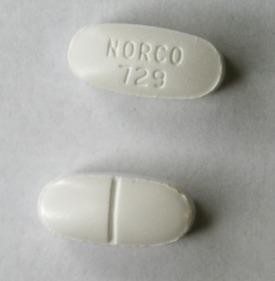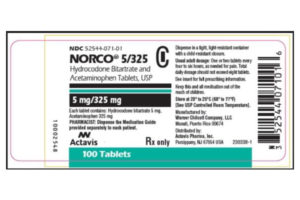
The process can be stressful and uncomfortable, or even painful, for someone who has developed a dependence on or addiction to hydrocodone. It is important to be under supervised medical care when coming off of hydrocodone. Symptoms can also be more severe such as seizures or spikes in blood pressure. Withdrawal symptoms are generally flu like symptoms, including: muscle aches, runny nose, nausea, vomiting, diarrhea, cramps, chills and sweats, irregular heart rate, difficulty concentrating, irritability, headaches, fatigue. Dosage, frequency of use, and bodily heath all play a role in the timeline and the intensity of the withdrawal symptoms. Withdrawal symptoms usually begin anywhere from 6-12 hours after the dose has been taken. You will stop feeling the effects of the hydrocodone before it fully leaves your body. It takes several half-lives to fully eliminate the drug, but generally one dose of hydrocodone should be gone within 24 hours. For a standard 10mg dose of hydrocodone, the half-life is around 4 hours, meaning that it takes roughly 4 hours for the body to process and eliminate half the hydrocodone. The life of a drug is measured by its half-life, or how long it takes the body to metabolize half of the drug. Dependence is when your body cannot function properly without the drug. Withdrawal symptoms indicate that your body has developed a dependence on the drug. At this point, withdrawal symptoms will occur when you stop taking the drug. With repeated use, the brain changes how it functions in order to accommodate the drug, and eventually it can no longer function properly without it. For people who have developed a tolerance of the drug, it may take longer to feel relief, or the effect of one dose may not be as strong. The dosage reaches peak concentration roughly 1.3 hours after it is taken. Usually, it takes about an hour to feel symptom relief. Hydrocodone is prescribed to be taken by mouth, and therefore must pass through the digestive system before you will feel its effects. How long Hydrocodone stays in your system will depend on a number of factors and varies from person to person. This disables the reception of feelings of pain and affects the reward center of the brain resulting in feelings of euphoria, reduced stress, drowsiness, and numbness, in addition to the pain relief.

Hydrocodone acts by activating opioid receptors, which inhibits your brain cells from sending out certain chemical signals. It is most commonly used for treatment of chronic pain, and is prescribed as Lortab or Vicodin. 2002 1(1):13-20.Īmerican Society of Anesthesiologists.Treatment Hydrocodone is the most commonly prescribed opioid in the United States and is connected to unprecedented levels of abuse.

The neurobiology of opioid dependence: implications for treatment. Morphine versus hydromorphone: does choice of opioid influence outcomes? Pain Res Treat. Prescription of controlled substances: benefits and risks. Dosing and titration of opioids: How much, how long, and how and when to stop? Opioid oral morphine milligram equivalent (MME) conversion factors table for prescription drug coverage.Ĭenters for Disease Control and Prevention. US Department of Health and Human Services (HHS). Prescription opioids drug facts.ĭepartment of Justice/Drug Enforcement Agency.

Opioid medications.Ĭenters for Disease Control and Prevention (CDC).


 0 kommentar(er)
0 kommentar(er)
